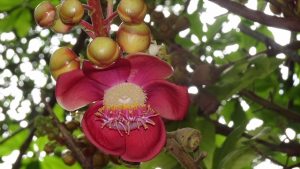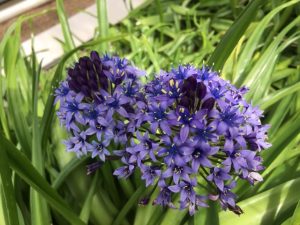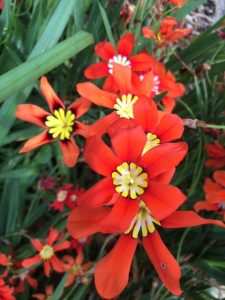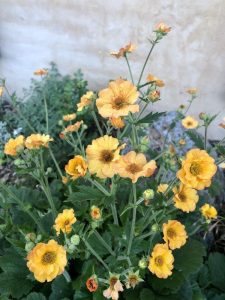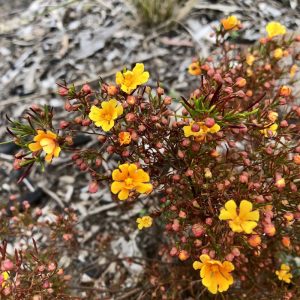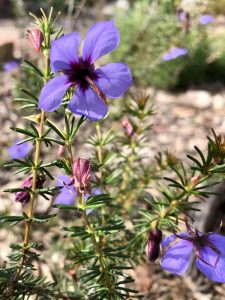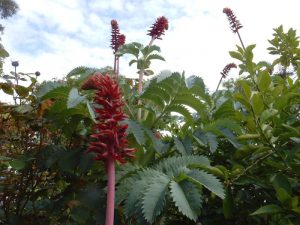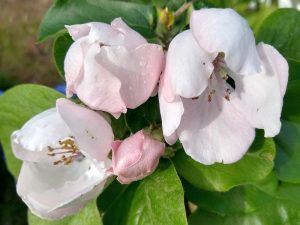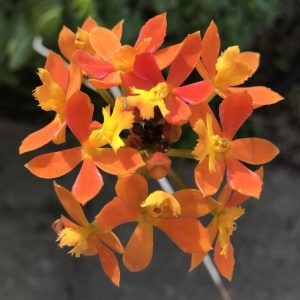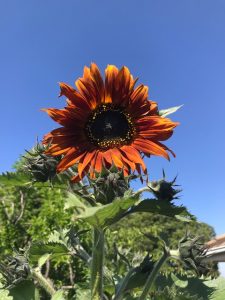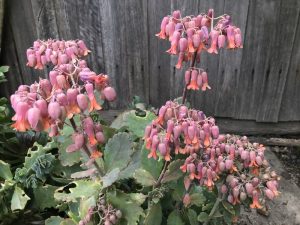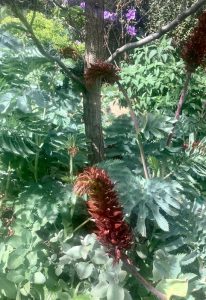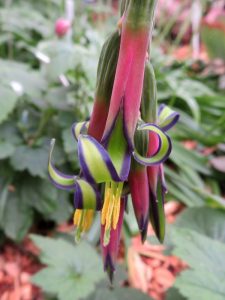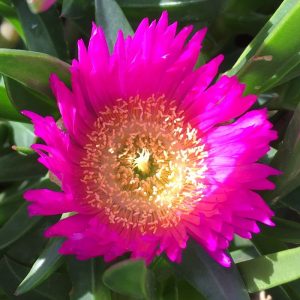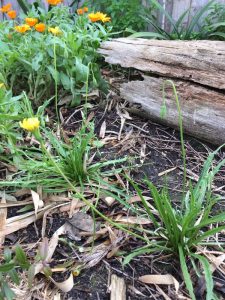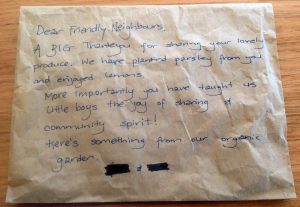Thanks to all the people who have contributed to this week’s newsletter: Angela Spencer, Angelo Eliades, Anna Sanders, Anne Parbury, Carrie Newbold, Deb Thomson, Gilles Lardy, Jacinda Brown, Jeanette Lynch, Jules Jay, Karin Motyer, Krystal John, Megan Goodman, Pam Jenkins, Rita Varrasso, Soo Mei Leong, Stuart Rodda, Sue Lockwood and Yennie Starkey.
What farmers’ markets will be happening this weekend?
On Saturday: Abbotsford Convent (relocated to Carlton) and Coburg. Not Wonga Park.
On Sunday: Alphington and Eltham.
Plant-based antioxidants; do flavonoids offer antiviral protection?
Newsletter reader Angela Spencer has written a brief article for our website entitled Plant-based antioxidants: do flavonoids offer antiviral protection?. Here’s the introduction: “Covid-19 has triggered a resurgence in the hunt for pharmaceutical and natural-occurring antivirals. Some researchers are exploring the antiviral potential of plant-based flavonoids as an extra level of the defence while we await a safe vaccine. Flavonoids are produced by plants in response to pathogens and photosynthesis. These compounds are most abundant in the body of plants (roots, trunk and leaves) as they are designed to protect the plant against infection and damage from the sun. Flavonoids have a tonifying effect on humans, many with antiviral and anti-inflammatory properties. They are currently being studied in connection to healthy aging, allergies, diabetes and a range of other disorders related to inflection and inflammation.” Angela then goes on to give links to 25 recent academic papers on the subject.
Want some natural health products?
Angela sells an extensive range of natural health products including flavonoids but also essential oils, supplements and natural cleaning products. A full range of her stock is available at www.obornehealth.com.au. She would like to offer a 20% discount off the obornehealth retail prices to newsletter readers. To take advantage of this offer, email Angela (angelartsel@gmail.com) and mention this newsletter.
Yes, you did know!
Spitfire sawfly larvae
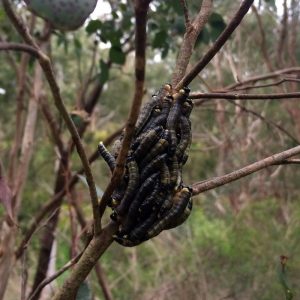 Last week, Doris Glier asked what the larvae in her picture are.
Last week, Doris Glier asked what the larvae in her picture are.
As a lot of you recognised, the larvae are spitfire sawflies (genus perga, family pergidae, suborder symphyta, order hymenoptera). Congratulations to Angelo Eliades, Anna Sanders, Anne Parbury, Deb Thomson, Jeanette Lynch and Stuart Rodda for your correct identification.
Stuart Rodda: “They move vigorously when touched (with a stick) and can spit out a nasty liquid as protection. If you do disturb them, don’t stand under them unless you want a shower.”
Anna Sanders: “There are 200 known species of sawfly in Australia and we have found some in our garden too. Have a look at this video of them that I recently made. Read this page about spitfire sawflies.”
Museums Victoria: they are one of the species of sawfly in genus Perga but it is not clear which. Despite the name, sawflies are actually more closely related to wasps than to flies. The larvae can exude a distasteful substance which probably makes them unpleasant for birds to eat. Contrary to what you might have been told as a child, they don’t actually spit at people but rather dribble an unpleasant tasting substance.
Wikipedia: During the day, the larvae congregate in clusters of 20 or 30 for protection and disperse at night to feed. When threatened, the larvae will raise their head and eject a strong-smelling yellow-green liquid, consisting predominantly of eucalyptus oil, to deter predators. This action gives them their common name of ‘spitfires’.
As I have said before, Museums Victoria offer a superb, free, online critter identification service.
Composting (or not) of disposable coffee cups
Last week, Nancy Mills asked whether anyone has succeeded in fully composting disposable coffee cups or their lids.
Jules Jay: “There are big differences between the terms biodegradable, compostable, and home compostable. This page from the CSIRO website explains some of the differences.
“Biodegradable items (like the coffee lids) should be avoided if possible, as they’re often made from plastics that simply ‘break down’ into millions of tiny pieces (becoming microplastics), rather than reverting to natural substances that feed soil. This degrading process can take many years, so they’ll likely never break down in a compost bin.
“Compostable items can also be confusing, as they fall into two categories. Much of what’s labelled ‘compostable’ can only be broken down in industrial composting facilities at high heat levels over a specific time period – and certainly not quickly in a home compost bin. Unfortunately, as there are a limited number of industrial composting facilities in Australia, not all compostable materials placed in the recycling bins will go to a proper facility.
“ Only packaging labelled as ‘home compostable’ will break down to become organic soil in the compost bin. So, it’s always best to check for the ‘home compostable’ logo (see picture right) and go for these products if possible.”
Only packaging labelled as ‘home compostable’ will break down to become organic soil in the compost bin. So, it’s always best to check for the ‘home compostable’ logo (see picture right) and go for these products if possible.”
Carrie Newbold: “I spoke to one of the companies that sells them a few years back. They are only made to decompose in the high temperature commercial composting facilities. I am pretty unimpressed by this, as no one can access one of these (although I do believe the zoo has one). So I became one of those annoying people who would tell anyone who’d listen the ‘truth’. Pretty sure my effect has been nil though.”
Angelo Eliades: “Many ‘biodegradable’ materials, such as the coffee cup lids, only break down under hot composting conditions that sustain high temperatures of 55-65 degrees Celsius for extended periods (2-3 weeks), such as those of commercial composting operations, or home hot composting systems, or over very long periods of time (years) in cold composting systems.
“Hot composting systems will also make woollen jumpers, cotton shirts or leather boots disappear over the same period of time, just to keep things in perspective. Even though many of these materials don’t break down very easily in slow cold composting conditions, they are technically still ‘biodegradable’.”
Do you know?
Jacinda Brown asks: “Can I graft a fruiting grape onto an ornamental grape?”
Newsletter readers’ food growing tips
 Following on Lyn Richards’ tip from two weeks ago to use yoghurt pots to grow seedlings, Anna Sanders has another suggestion: “cut the pots into strips and use a Sharpie permanent marker to use them as labels for seedlings.”
Following on Lyn Richards’ tip from two weeks ago to use yoghurt pots to grow seedlings, Anna Sanders has another suggestion: “cut the pots into strips and use a Sharpie permanent marker to use them as labels for seedlings.”
Read more newsletter reader tips.
Anyone else got any growing tips that they are willing to share? Email me.
Want to help?
Someone is in need of an egg incubator
Krystal John is trying to source an incubator to hatch chicken eggs. She is looking for a fully automatic one for 12 or more eggs (i.e. one that controls both temperature and humidity and also turns the eggs). She would like to borrow or rent the incubator (or possibly buy it). She lives in Eltham, so you would need to be within 5kms in order for her to be able to collect it. If you are able to help her, contact Krystal by phone (0415 337851) or email (krystalnavez@gmail.com).
A local mushroom farmer
Buttons is a mushroom farmer based in Alphington. She has been awarded a grant of $15K for a cool room and shed but has to match it with other money. She is crowdfunding for that money. Read more and potentially donate.
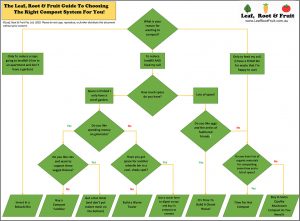 Some articles for you to read
Some articles for you to read
What is the best compost method?
When Melbourne-based Leaf, Root & Fruit write an article, it is usually both comprehensive and comprehensible. This article on different composting methods is no exception.
Share market: Australia’s giving economy
Read this article on a website called Eativity about food sharing initiatives in Australia. It mentions some of the organisations who give away food in Melbourne, many of whom have previously been discussed in this newsletter and/or are discussed on our website: FareShare, Feed Appeal, Foodbank, SecondBite, 3000acres, Cultivating Community, Ripe Near Me, ShareWaste and Crop Swap Melbourne.

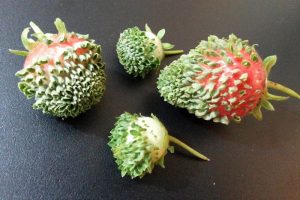 Word of the week – vivipary
Word of the week – vivipary
Vivipary is the phenomenon whereby seeds germinate while they are still inside, or attached to, the parent plant or fruit. Whilst it occurs as a matter of course in a few (but only a few) plants, in most plants it is usually the result of a hormone imbalance. The pictures show some viviparous strawberries and tomatoes.
Recipe: raspberry wine
This recipe comes from one of the Eltham and District Winemakers Guild’s gold medal winemakers and was sent in by Dave Chambers.
The wine-specific ingredients and equipment can be obtained from a number of local shops, including Costante Imports (based in Preston), Home Make It (based in Reservoir) and The Artisan’s Bottega (based in Epping).
2 kilos raspberries, fresh or frozen
1½ kilos white sugar
1 teaspoon yeast (a red wine yeast is good)
1 teaspoon citric acid (it’s a powder)
¼ teaspoon pectinase (helps clarify and clear the wine)
tap water(as required to top up to 5 litres)
Fact warning: yeast is in the air so if you put the raspberries in a bucket and do nothing else, they will eventually turn in to wine (more or less). But most people want more control and therefore use a particular type of yeast (usually a red wine yeast) for the fermenting, whereby the sugar is turned into alcohol.
Mash the raspberries in a bucket with 800g of sugar.
Pour 2½ litres of boiling water over the mash. Cover with a cloth. Stir it daily for 3½ days (taking the cover off before stirring).
Strain all of this and discard the pulp into the compost.
Add the yeast (having first hydrated it with some of the liquid) and the pectinase. Add the citric acid and then leave for 7 days to ferment.
After the 7 days, add in some sugar syrup made from 700g of sugar (that’s just water and sugar blended with a stick blender). Top up your container to 5 litres with water. This is called a demijohn or carboy. Add a bubbler or airlock.
After all the action of the yeast party has ceased, rack off the liquid into another container, making sure to leave behind in the bottom the cloudy sediment. This will give the wine clarity and sparkle.
Do this one more time in a few weeks.
Just sweeten to taste and it’s ready.
Note: all your containers and equipment should be very clean.
Meg’s social isolation week
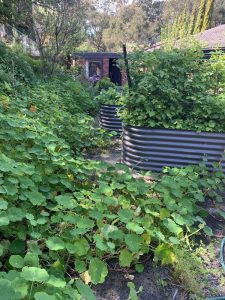 I love the way that my nasturtiums ramble and soften the edges in the garden and their orange and yellow flowers are bright spots in the foliage (see photo). They really represent abundant spring growth, but are also lovely to add to salads. Everything is starting to emerge. The broad beans and snow peas are in flower, as are the early strawberries. Blossom is giving way to leaf and I am pleased to see only one of the peach trees has some leaf curl this year.
I love the way that my nasturtiums ramble and soften the edges in the garden and their orange and yellow flowers are bright spots in the foliage (see photo). They really represent abundant spring growth, but are also lovely to add to salads. Everything is starting to emerge. The broad beans and snow peas are in flower, as are the early strawberries. Blossom is giving way to leaf and I am pleased to see only one of the peach trees has some leaf curl this year.
The strong stems of asparagus are beginning to push their way through the soil and we have harvested the first young spears of the season. Our plants are around 5 years old and we added a purple variety this year. It is recommended that you do not harvest from your crowns until they are a few years old to allow them to establish. They are lovely when very lightly cooked on their own. However, we also like them through this light spaghetti.
Asparagus pasta
500g spaghetti or other pasta
2-3 chicken breasts
300g asparagus
200g roasted red peppers
olive oil
The dressing
3 tablespoons lemon juice
1 tablespoon seeded mustard
2 tablespoons olive oil
1 tablespoon dill, finely chopped (or fennel tops)
salt and pepper to taste
Cook the pasta in boiling salted water.
While the pasta is cooking, grill the chicken breasts and asparagus in a little olive oil.
Finely slice the chicken and roasted peppers and cut the asparagus into roughly 3cm pieces.
Make the dressing by mixing all ingredients together (make sure to balance the lemon juice and olive oil by taste).
Drain the pasta, reserving a little of the cooking water.
Toss through chicken, peppers, asparagus and dressing, using the cooking water to bring it together if required.
Reader photos
Last week’s theme – interesting Spring flowers
16 photos were submitted.
This week’s theme – meals you have cooked
The photo theme this week is ‘meals you have cooked’. As ever, send me your interesting photos, together with a title and (if you want) a story, and I will publish them next week. Please submit any photos by end of play on Sunday at the latest.
To get you started, here is a picture of some fried eggs and baked beans that my wife cooked.
Which link was clicked most times in the last newsletter?
The most popular link was the note pictured right that one of our newsletter readers recently received. As so many people clearly wanted to read the precise words, I thought that I would transcribe them below.
“A BIG thankyou for sharing your lovely produce. We have planted parsley from you and enjoyed lemons.
“More importantly you have taught us little boys the joy of sharing and community spirit!
“Here’s something from our organic garden.”
So, do you think, did the two little boys actually write the note, as stated, or was it one of their parents? (This is a rhetorical question!)
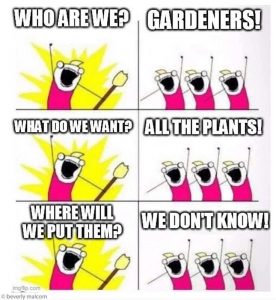 Joke of the week
Joke of the week
I am going bananas. That’s what I say to my bananas before I leave the house.
Upcoming online events
If you know of any events other than those listed below, email me.
Newly announced events
Handmade vegan cavatelli pasta with pumpkin and walnuts: Friday, 25th September, 6-7.30pm; $15; organised by Shop225. Read more and book on EventBrite.
Vegan and gluten free Italian cooking class: Saturday, 17th October, 1-2.30pm; $20; organised by Shop225. Read more and book on EventBrite.
Sourdough bread making: Saturday, 31st October, 11am-midday; $20; organised by Living & Learning Nillumbik. Read more and book on their website.
Sourdough bread making: Sunday, 1st November, 3-4pm; $20; organised by Living & Learning Nillumbik. Read more and book on their website.
Getting started with veggie gardening: Thursday, 5th November, 7-8.30pm; free; organised by Sustainable Gardening Australia. Read more and book on WeTeachMe.
Home composting Q&A: Monday, 9th November, 7-8.30pm; free; organised by Edendale. Read more and book on WeTeachMe.
Modern bush tucker: Thursday, 12th November, 7-8pm; free; organised by Moreland City Libraries. Read more and book on EventBrite.
Preparing for Summer harvest: Thursday, 12th November, 7-8.30pm; free; organised by Sustainable Gardening Australia. Read more and book on WeTeachMe.
Growing citrus: Saturday, 14th November, 11am-12.30pm; $28; organised by Sustainable Gardening Australia. Read more and book on WeTeachMe.
Previously announced events
Prepping for summer veggies: Thursday, 24th September, 10-11am; free; organised by Iramoo Community Centre. Recommended by Keryn Johnson. Book your place by emailing them.
Chooks 4 families & kids: Saturday, 26th September, 10-11.30am; $10; organised by Edendale. Read more and book on WeTeachMe.
Growing microgreens: Saturday, 26th September, 11am-midday; $28; organised by Sustainable Gardening Australia. Read more and book on WeTeachMe.
Flatbread parantha and raita: Saturday, 26th September, 5-6.30pm; $29; organised by Cook Indian by the Creek. Read more and book via Facebook.
Biodiversity and sustainable food systems: Wednesday, 30th September, 10.30am-2.30pm; $120; organised by CERES. Read more and book on Humanitix.
Wonderful world of worms for kids: Thursday, 1st October, 3-4pm; free; organised by Edendale. Read more and book on WeTeachMe.
Cooking up compost: Saturday, 3rd October, 2-3.30pm; free; organised by Zero Waste Victoria. Read more and book on Humanitix.
Onion and potato bhaji and chutney: Saturday, 3rd October, 4-5.30pm; $29; organised by Cook Indian by the Creek. Read more and book via Facebook.
Queensland fruit fly for home gardeners: Monday, 5th October, 7-8.30pm; free; organised by Edendale. Read more and book on WeTeachMe.
Backyard chooks for beginners: Saturday, 10th October, 10-11.30am; $10; organised by Edendale. Read more and book on WeTeachMe.
Lamb bhuna masala: Saturday, 10th October, 5-6.30pm; $35; organised by Cook Indian by the Creek. Read more and book via Facebook.
Garden bed basics: Sunday, 11th October, 11am-1pm; $donation; organised by Brunswick Tool Library. Read more and book on EventBrite.
Backyard beekeeping basics: Wednesday, 14th October, 7-9pm; $50; organised by CERES. Read more and book on Humanitix.
Chicken biryani: Friday, 16th October, 5-6.30pm; $35; organised by Cook Indian by the Creek. Read more and book via Facebook.
Growing fruit and veg in a wildlife garden: Thursday, 29th October, 7-8.30pm; free; organised by Sustainable Gardening Australia. Read more and book on WeTeachMe.
Open Table offer their weekly no waste cook club workshops free and online on Saturdays. As well as cooking (which is actually optional), you will learn about food waste and composting. Register on EventBrite.
All The Dirt is a weekly podcast about gardening.

